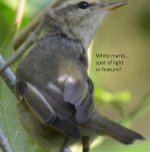JHDraytonbassettpits
Well-known member
How many Siberian birds are seen on the West coast of the US (let alone the East Coast, compared to Western Europe? Last autumn saw 4 figure counts of eg Yellow-browed Warblers on islands off Norway
You have to factor in migration routes too while speculating.
Only Arctic Warbler, Dusky Warbler seen on the West coast of America other than Alaska, details Birding frontiers.





